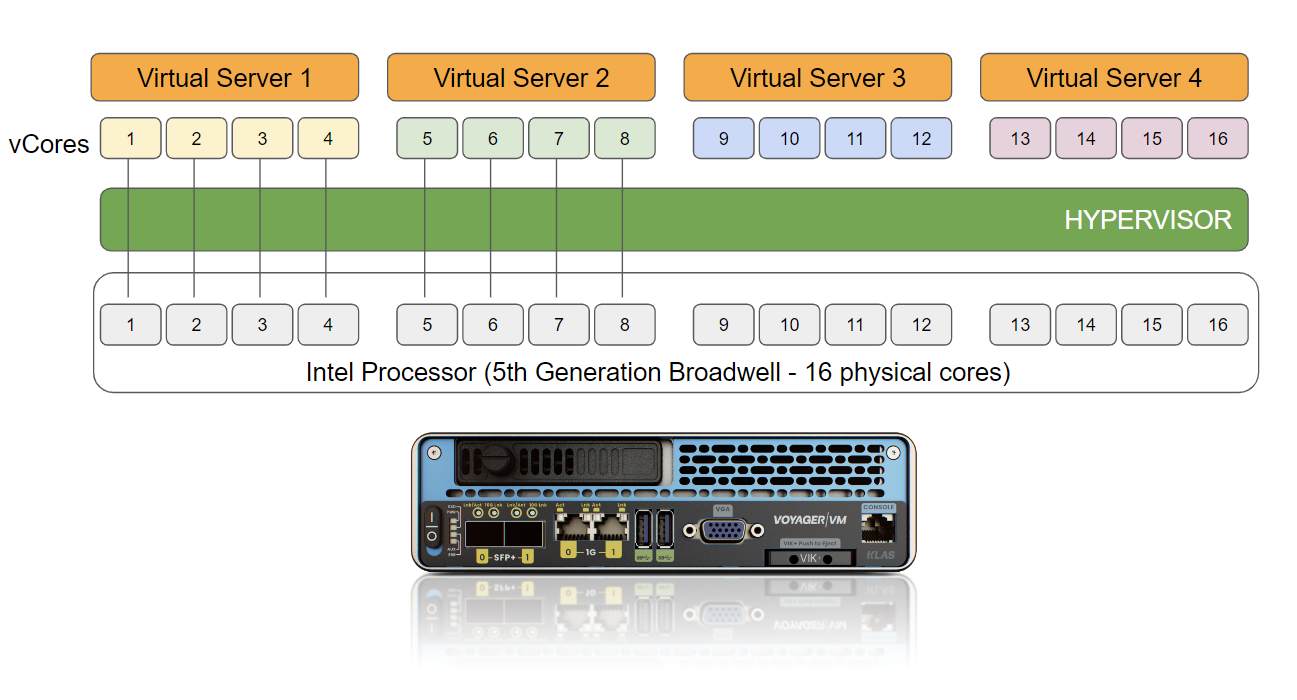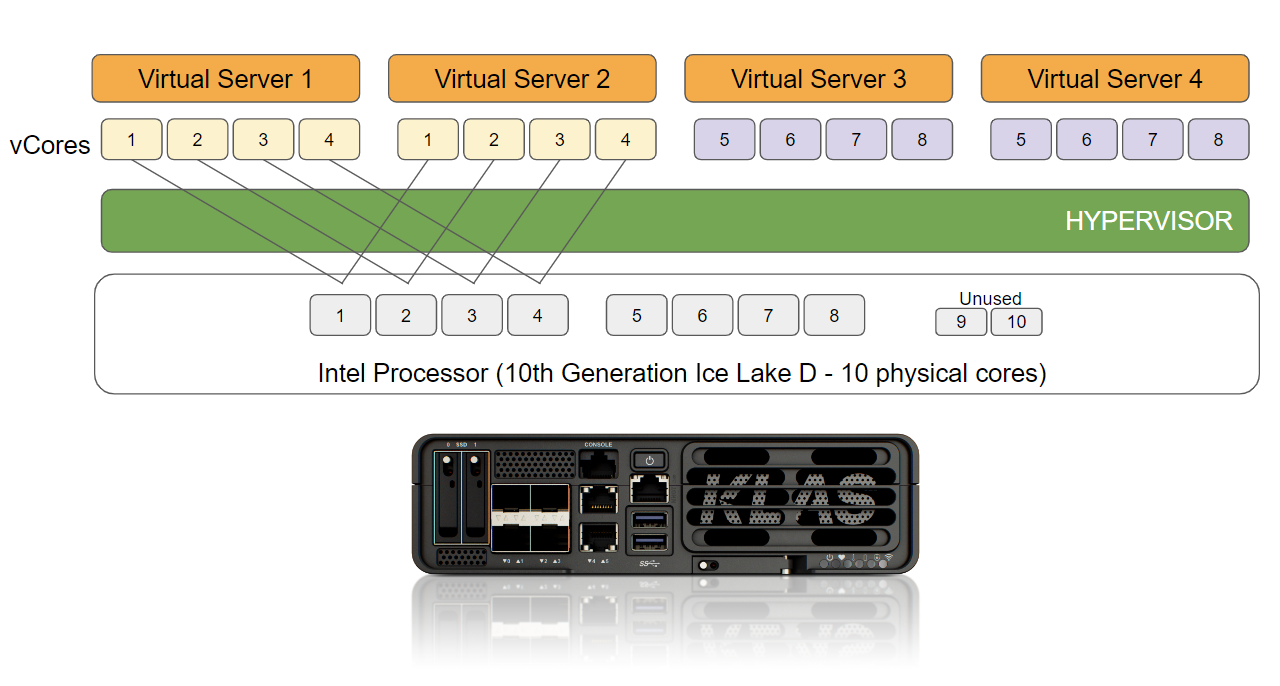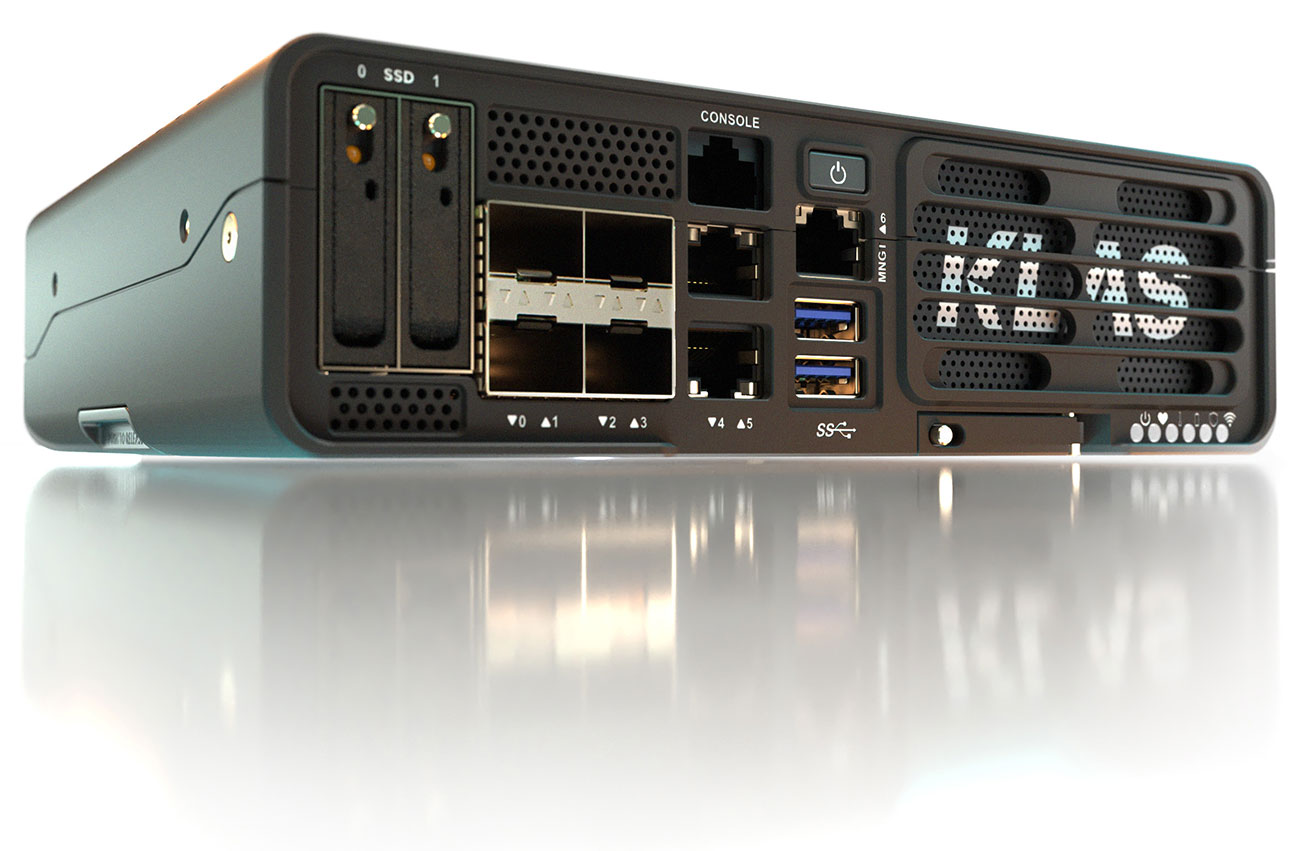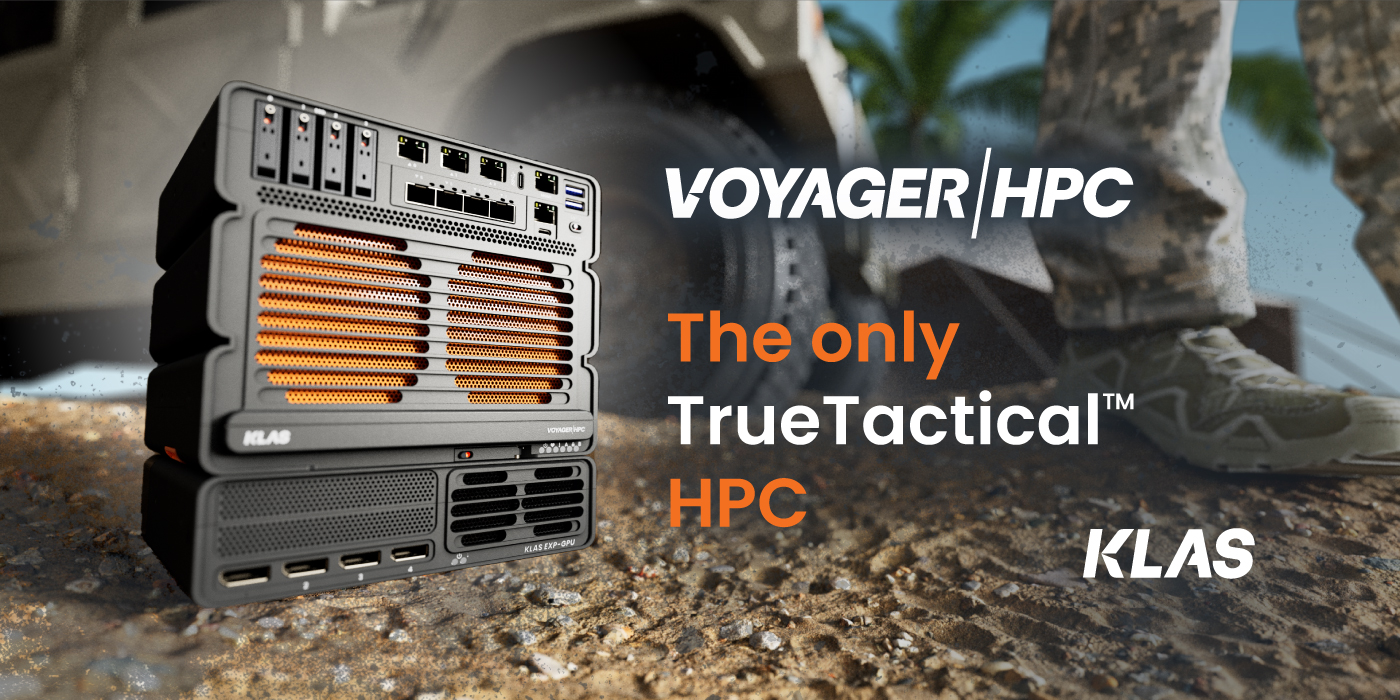When it comes to integrating new advanced edge technology or upgrading proven edge deployments, familiarity with the status quo can lead to resistance and overshadow the value of what the new has to offer. In this blog, we will demonstrate how adopting new technologies, such as the newly released VoyagerVM 4.0¹ can offer game-changing improvements at the tactical edge.
VoyagerVM 4.0 uses the latest Intel® Xeon® processor (formerly Ice Lake D)². The new Xeon D from Intel – is faster, delivers increased performance, and new capabilities in terms of Machine Learning (ML), networking throughput, and security. Essential aspects of computing at the Edge.
However, when you compare the new VoyagerVM 4.0 (VM4) with its predecessor, the VoyagerVM 3.0 (VM3)³, you will see that it has 10 cores while the VM3 has 16 cores. The initial thought is – “I have six fewer cores for my deployment?!”.
Mathematically this is true, but technically it couldn’t be further from the truth!
Faster, more powerful compute at the edge
At a high level, processors are used to interpreting, acting upon, and manipulating the 1s and 0s of users, machine inputs, or as part of an instruction set in a software program. To do this, the processor interacts with the temporary storage of the read access memory (RAM) and the permanent storage memory of the disk drive. The higher the processor speed when connecting with the RAM and the storage drive, the faster the computer can complete the instruction.
When it comes to the VM4 (10th Gen Xeon D), it has faster memory clock write speeds (3.1GHz) and also comes with 33% more RAM (128GB), versus the VM3.0 – 5th Gen Xeon D (2.13GHz and limited to 96GB). Furthermore, VM4 uses NVMe-based storage disk drives with 3GBps write speeds, which is five times the speed of the SATA drives used in VM3.
To take a simple example such as using a calculator on your PC, in which you calculate, and save the circumference of a circle, i.e. (2πr), to the disk drive, the worst case scenario is that the VM4 will do this 5 x times faster than the VM3 (which is limited by the speed of writing to the SATA disk).
Behind the science
To dig deeper, π, aka pi=3.14159.., is a fraction or a floating point variable in computing parlance.
Floating points are difficult for a CPU to operate with, compared to integer operations (whole numbers). Hence processor vendors produce theoretical performance numbers called Giga-Floating Point Operations per second (G-FLOPS). By contrast, most of our servers doing web services or running databases use integer arithmetic and will consistently execute faster.
The theoretical calculation for G-FLOPS is the (CPU clock speed) x (Number of cores) x (CPU instructions per cycle) x (Number of CPUs).
When comparing the VM4 and VM3, Intel⁴ tells us that the G-FLOPS are 272 and 332, respectively. No surprises here; the VM3 does more G-Flops as it has more cores. However, if we limit ourselves to a single core, the theoretical calculation results in 27.2 G-FLOPS and 20.75 G-FLOPS for VM4 and VM3, respectively. The result is, a single core on the VM4 can do 30% (7.2 G-FLOPS) more than the VM3.
To boil all the science down into plain English, the VM4 is far more powerful and faster than its predecessor. Each core of the VM4 can execute a far bigger compute workload faster than the VM3. The worst case scenario is that the workload performance increase on the VM4 is as low as 30%, that is, if we spend our days going around in circles!
More compute with fewer cores
At this stage, we should be comfortable that the VM4 delivers a significant performance increase on the VM3 i.e. 1.5x increase in clock speeds, 5x times the memory write speeds, and 30% more capacity for process-intensive calculations per second, per core.
However, the resistance to moving forward may still be the idea that fewer cores exist. To overcome this, we need to look at simple deployment use case.
Deploying rugged compute at the Edge is expensive, and there is a need to maximize overall compute usage at the tactical Edge. Usually, a hypervisor or layer of virtualization comes into play; its purpose is to share the processing cores, memory, storage, and network resources so multiple servers can run a single device at the tactical edge. An essential capability of a hypervisor is the ability to oversubscribe the physical core of the compute platform. The result is that up to 2 to 3 virtual machines can run simultaneously, all of which share the same physical core.
On the VM3, the IT admin may have 4x servers to run at the tactical edge, each with 4x physical cores assigned. In this instance, the physical cores are mapped directly to the virtual cores needed for the server, requiring all 16x cores on the VM3, as per figure 1 below.

Figure1: 1-to-1 mapping of physical cores to virtual cores in VoyagerVM 3.0
However, the same deployment use case for 4x servers can easily be catered for by the VM4 using only 8x physical cores, with minimal impact on end-user performance (as we know, our cores and memory are far faster). The IT admin can oversubscribe the physical core 2-to-1, as shown in figure 2.

Figure 2: Oversubscribing physical cores (2-to-1) in VoyagerVM 4.0
In fact, for the end-user connecting to a service running on the VM4, their applications will be significantly faster, noting again that the VM4 has a faster clock, increased RAM and faster storage disk write speeds.
For the IT folks, they have 2x physical cores available for future use cases. For example, consolidate a firewall onto the VM4, eliminating the need for another box at the tactical Edge!
Summary
With the VoyagerVM 4.0, built on the latest generation of Intel Xeon D processors, it is possible to do more at the tactical edge with fewer cores! Designed to a TrueTactical™ standard⁵, the rugged compute module delivers the power to run the most advanced software programs in a form factor and power envelope that meets the needs for Low-Swap.
References
- https://www.klasgroup.com/products/voyager-vm-3-0/
- https://www.intel.com/content/www/us/en/products/platforms/details/ice-lake-d.html
- https://www.klasgroup.com/products/voyager-vm-3-0/
- https://www.intel.com/content/dam/support/us/en/documents/processors/APP-for-Intel-Xeon-Processors.pdf
- https://www.klasgroup.com/government/truetactical/
Further Reading
Innovating at the Edge with VoyagerVM 4.0
Securing the cloud at the edge with VoyagerVM 4.0






